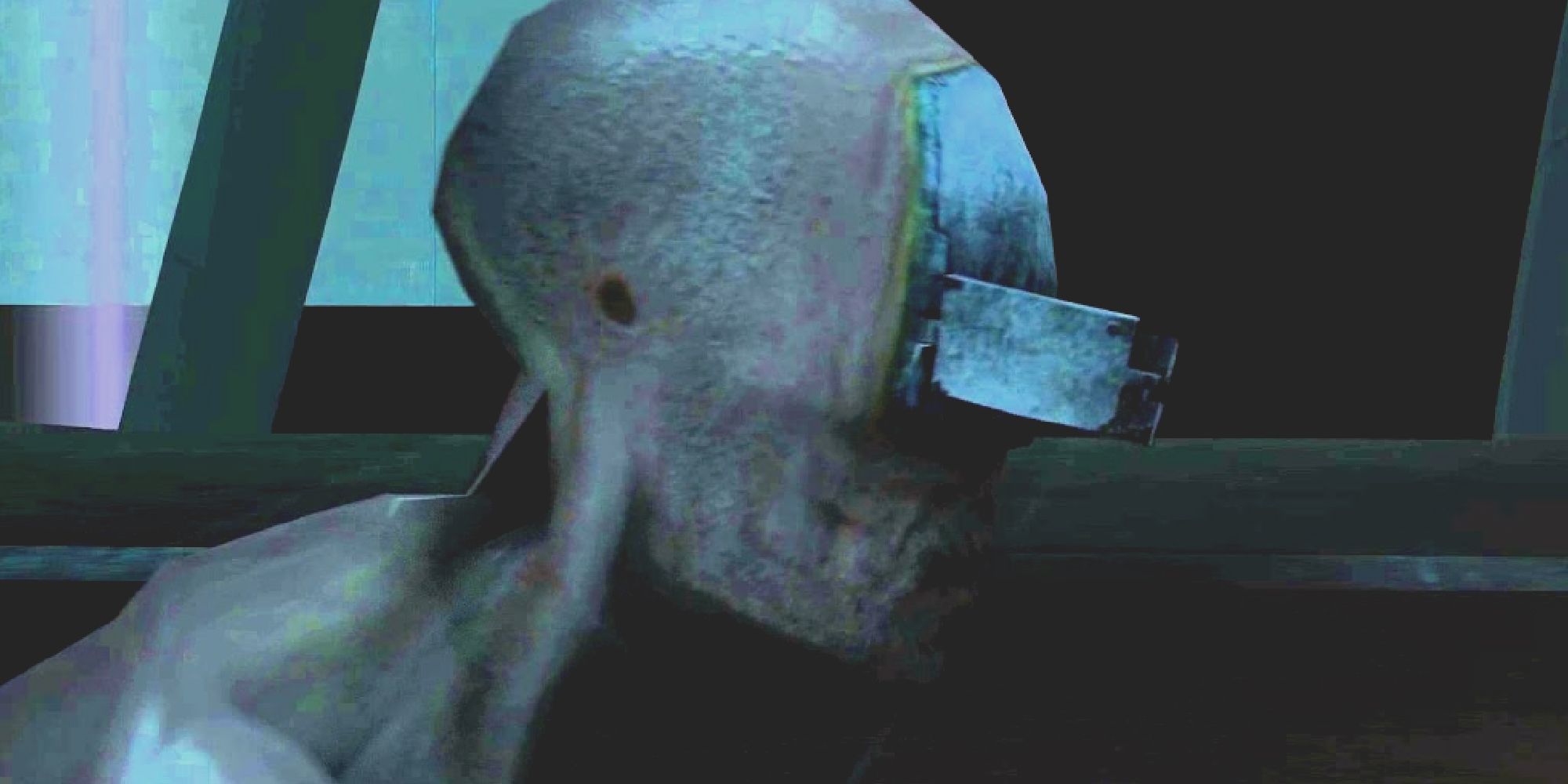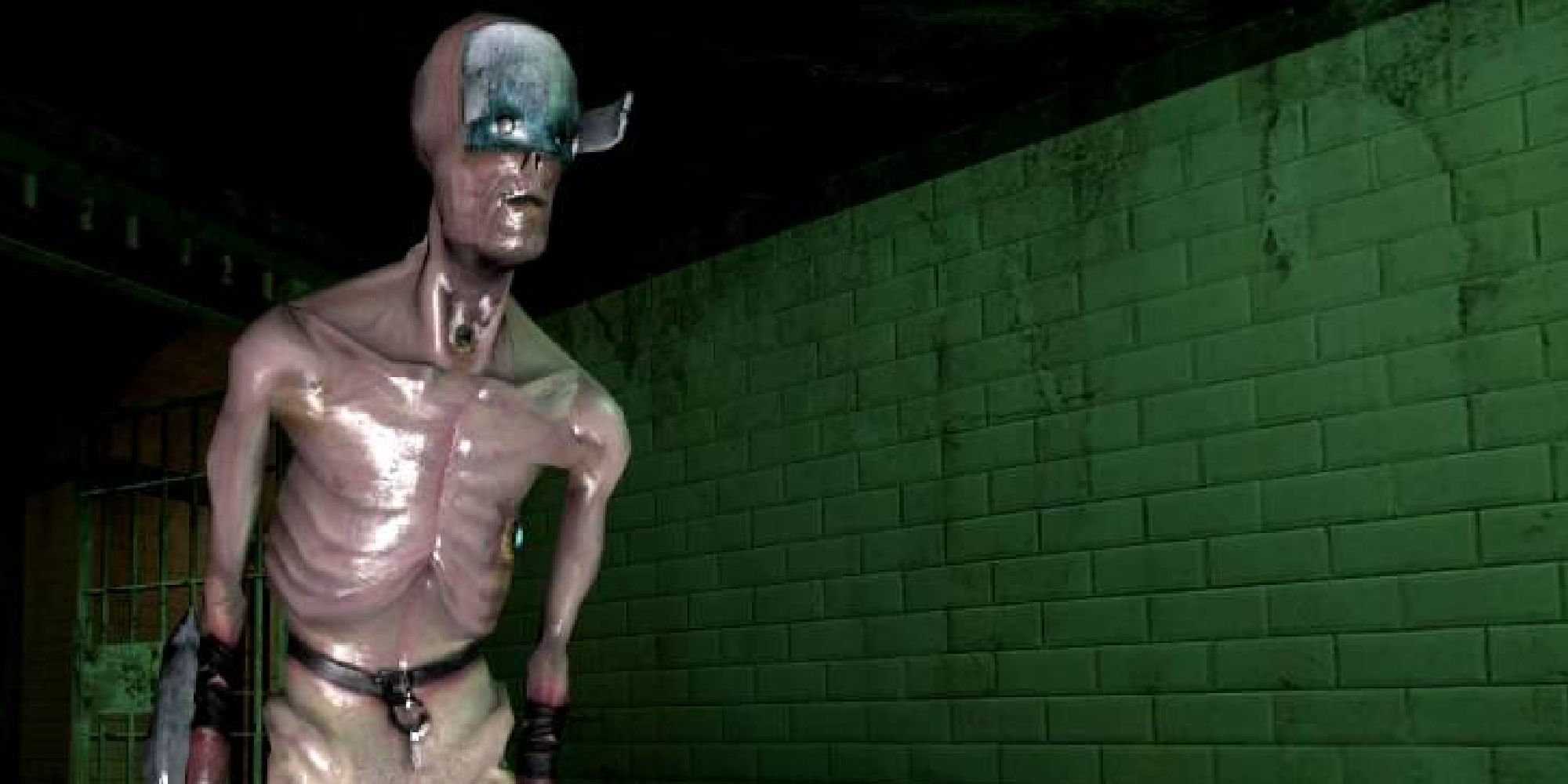Alyx Vance rarely gets scared. From the moment you meet her, she’s beating up Metrocops, smuggling refugees through dimly lit tunnels, and getting into sketchy untested teleporters. She’s brave, heroic, and willing to lose it all, standing with a straight face against an impossibly powerful foe. This all changes when you - Gordon Freeman - find yourself trapped in an overturned train carriage carrying stalkers. Suddenly, Alyx’s demeanour breaks and the horror sinks in - she’s visibly terrified. Nothing else comes close to eliciting that infectious sense of dread. That’s because the stalkers are a bleak, unnatural fate, and one that cuts through all of Half-Life’s other horror endeavours.
They’re the connective tissue that threads Half-Life 2 together from beginning to end - we just don’t notice because it’s so subtle. When you first arrive in City 17, you’re shepherded to a queue, nearly boarding the train to Nova Prospekt. At the last minute, Barney Calhoun saves you. Maybe you didn’t notice, but the police were determining your value - if you aren’t a boon to society and willing to become a productive cog in the Combine machine, you’re sent to ‘prison’. That’s a nice way of phrasing it. In reality, it’s a factory that twists humans into stalkers, contorting their bodies and removing their limbs, shuttering out free will and any semblance of self.
By the end of the process, they have grey skin stretched to its limits by their protruding rib cages and hollow, sunken eyes blocked by metal plating - they’re unrecognizable. When you first visit the Citadel, I wouldn’t blame you for assuming they’re aliens. They’re humanoid, but certainly don’t look human. Yet they are. Stalkers are kidnapped rebels or citizens plucked at random, the worst fate imaginable for anyone living in this world. Death is a sweeter alternative. Knowing this adds a lot of depth and context to a later chapter in which Alyx’s father Eli is kidnapped. At the time, it’s only natural to assume that she’s worried about him being killed, but now we know what she was really scared of - him being stripped down to basics, forced into slavery by these interdimensional conquerors. He’s even in one of the stalker transportation pods - the writing is on the wall.
Half-Life explores body horror in most of its enemies and a lot of its ideas are tied to the loss of humanity and free will. Headcrabs overpower their hosts, forcing them to rip open their own stomachs; Advisors are giant floating slugs that become part of the Combine’s hierarchy, devoid of any personality or identifying characteristics; the soldiers themselves are ripped of thought and agency, forced to toe the line without realizing they’re being forced. The stalkers are no different but their familiarity adds a poignant level of tragedy to their existence. Some were rebels once fighting for a just cause. Now, they’re hunched over husks performing menial tasks day in and day out, constantly in agony. Imagine your family - your parents - suffering through that. No wonder Alyx was so on edge.
Stalkers are an ominous background noise throughout Half-Life 2. Everywhere you go, the idea of the stalker lingers while the anxiety of becoming one is dangled in front of you, even if you don’t realize it. It’s a nuanced horror that’s sown over time, their very presence speaking for itself. The mere idea of a stalker is discomforting, so there’s no need to make it any more blatant, but Episode 1 does. On the face of it, this sounds like a bad idea - less is more. But given that Half-Life 2 laid the groundwork and let the idea take hold in our minds, it works wonders, especially because it juxtaposes the usual gunplay we’ve grown so used to. We’re truly introduced to stalkers in a cramped setting, unable to fight back. Despite the encounter’s brevity, being unable to fight back makes it unforgettable.
We fight a few in the Citadel as we try to stop the facility from going supernova - they even factor into the puzzles. Yet they’re sparse and spread apart, often doing little more than interacting with a terminal or blocking a doorway. They go down easy. But nothing about that diminishes their horror - they look exhausted yet are incapable of rest. In the moments where they do get respite, it’s not exactly comforting. Sleep for them is like being turned off as the visor is shut down before they’re locked into cold metal cages. They’re treated like mindless robots, eliciting an element of guilt as we callously gun them down. Regardless - we do, and then we escape.
Once aboard the train, Alyx casually riffs on everything like she’s back to her usual self. She’s witty, laughing in the face of danger, but then she notices the stalkers and begins to grow unsettled. Just seeing them - even asleep - gets under her skin. It doesn’t end there. The train shakes, tips to its side, crashing violently, and then tinges red. The pods sprawl open and the stalkers scream out, gnashing at her face with their rotten teeth. Alyx is visibly petrified. It’s a moment of sheer terror and the culmination of Valve’s careful world-building. Coming face-to-face with them is blood-curdling and remains a perfect example of how gaming does horror like no other medium.


